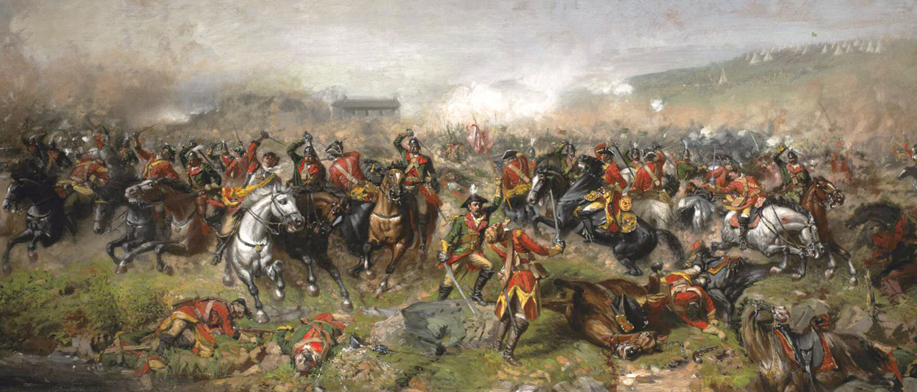Battle of the Boyne
Posted on 16th July 2021
On 5 November 1688, the Dutch Prince William of Orange landed at Torbay in Devon with an army of 20,000 men. In an unusual turn of events, he had actually been invited to invade the country by prominent members of the English aristocracy.
The Catholic King James II who already in his mid-fifties was an elderly man by the standard of his times had been expected to die without a male heir but his wife Mary of Modena had recently given birth to a healthy baby boy. Many disturbed by his advocacy of the Old Religion now feared the return of a Catholic dynasty.
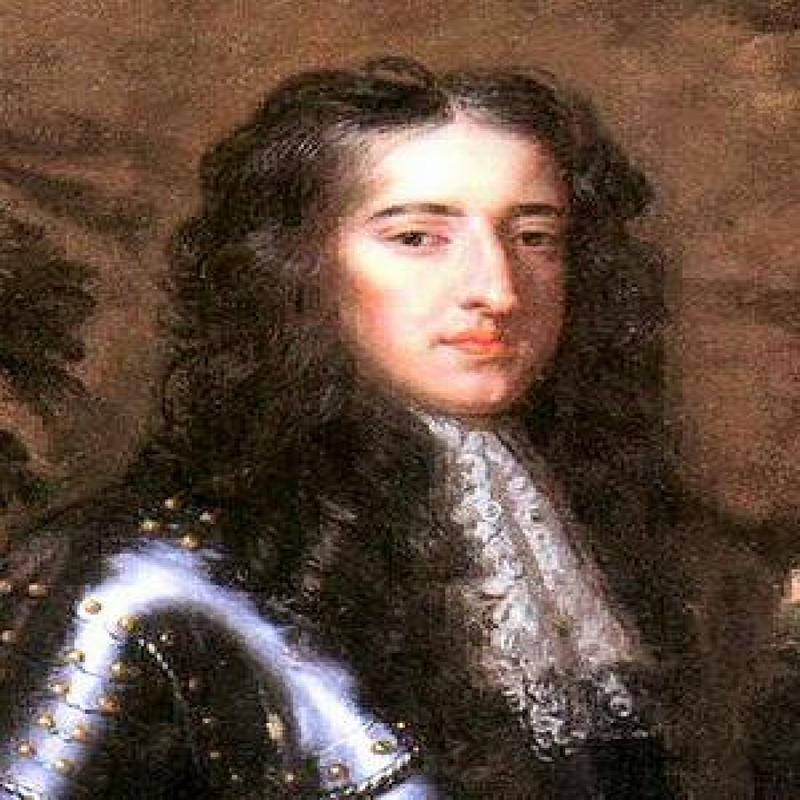
William, whose invasion had been delayed many months due to bad weather had little interest in being King of England and he was unsure of his decision to intervene. He was after all James’s nephew and son-in-law and had spent much of his young life at the Court of Charles II in London.
He could however see the strategic advantages of doing so. His Dutch Kingdom was in conflict with the forces of the Catholic King Louis XIV of France, and he would rather have the powerful English Navy and its Army under his command than as an ally of his enemy as seemed likely.
His uncertainty sent palpitations through the heart of the English Establishment so much so that when at last a favourable Protestant Wind arrived, his landing was greeted almost as a form of deliverance.
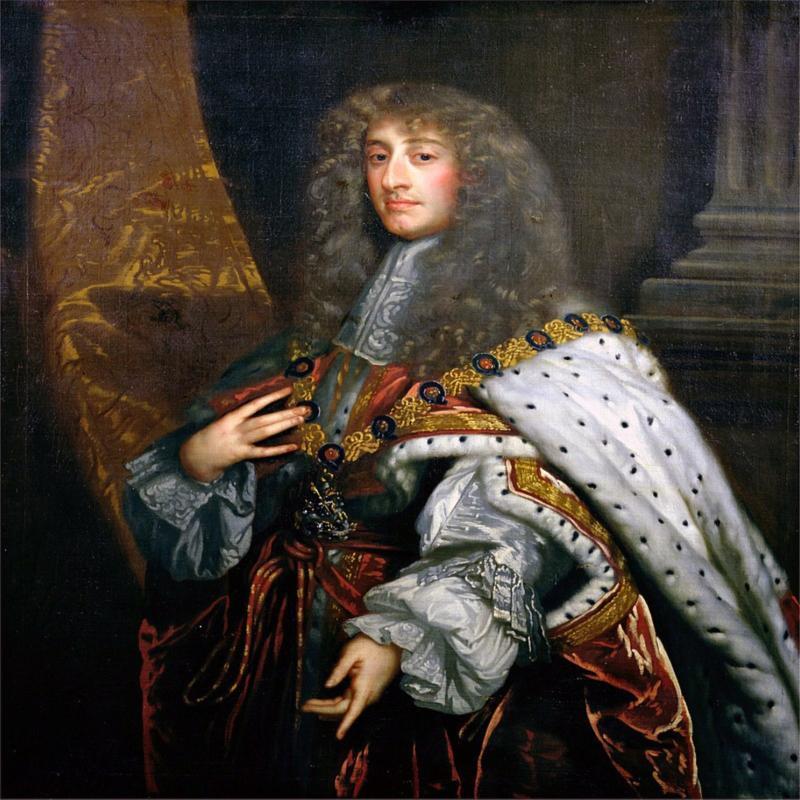
The reception granted to William wasn’t lost on James but with the army he had at his disposal almost twice the size of the William’s there didn't appear to be any imminent danger; but such was his state of paranoia he feared London would rise up against him were he absent so he left much of his army in the city to maintain order.
Even so, his chances of victory remained high as he marched west to confront William, but he doubted the loyalty of his army and had recently received reports of Catholic Officers being wilfully disobeyed and even on occasions attacked. Beset by uncertainty and nose bleeds his confidence was dealt a shattering blow when his best General, John Churchill, defected. He now lost his nerve and returned to London to await developments.
At first there appeared to be a willingness on both sides to negotiate a settlement, but James was haunted by the fate of his father who had tried similar only to end up on the scaffold.
Fearing for the safety of his wife and young son he sent them abroad before on 11 December he too tried to flee the city dropping the Royal Seal, the symbol of Royal authority in England into the River Thames as he did so.
He did not get far and was captured and returned wherein he tried to resume negotiations, but William had by this time made up his mind to be rid of him altogether and with his tacit approval on 23 December, James was permitted to flee once more.
The fact that James had seemingly left the country of his own volition allowed his opponents to depict events as an abdication rather than a usurpation but the English Parliament were still faced with the thorny problem of how to deal with someone who was in effect an alien presence and one who had thousands of troops on the streets of London. They were disinclined to simply hand the Crown over to William, who at one point threatened to take his army home and leave the way open for James to return.
Eventually, after long, complicated and often bitter negotiations William was crowned King on 13 February 1689, but he would rule jointly with his Queen, Mary, James’s daughter. He had also had to sign into law the Bill of Rights that guaranteed that the real power in the land would remain firmly in the hands of Parliament.
Despite developments in London, James, now in France, had no intention of simply relinquishing his Crown without a fight. His pro-Catholic reforms had made him popular in Ireland and it not only remained a bastion of support but here his rule still ran, and he believed it would be his route back into England. He also had the support of his fellow Catholic Monarch, and the most powerful in Europe, Louis XIV of France not just financially and politically but also militarily.
James had been nurturing support in Ireland for some time and he had ordered his Viceroy in the country, Richard Talbot, to clear the path of any opposition to his return and secure all the arsenals and strongholds.
The epicentre of opposition to James in Ireland was in the North of the country around the province of Ulster which had been colonised over the years by mostly Scottish Protestants.
One of the places Talbot pinpointed as being potentially disloyal was the city of Londonderry and he decided that the garrison there should be replaced by an army of loyal Catholics and appointed Alexander MacDonnell, Earl of Antrim, to oversee the change but instead of discharging his task quickly Antrim spent many months trying to recruit men from the Catholic Highlands of Scotland.
It gave the people of Londonderry a long time to prepare and so when he finally arrived outside the city’s walls on 7 December 1688 with his 1,200 strong army of ‘Redshanks’, the local apprentice boys on their own initiative had already seized the keys and locked the gates to him.
James II arrived in Ireland in March 1689, with 6,000 French soldiers under the command of the experienced Antoine de Caumont, Duc de Lauzon. He entered Dublin unopposed on 23 March where amid much rejoicing the Irish Parliament affirmed him as their King. He then passed a bill that granted liberty of conscience to Catholic and Protestant alike but also a Bill of Attainder against all who opposed him meaning to do so was considered an act of treason and those culpable liable to execution.
His priority however, remained recruiting an army large enough to oppose the reinforcements he knew William would send but Irish Catholics believing his arrival was the dawn of a new freedom and the end of Protestant oppression flocked to his banner. They volunteered in large numbers, but it was to be a peasant army untrained and poorly equipped. Many were armed only with knives, clubs and farm implements such as scythes. Even the few muskets that were provided were antiquated and many worse than useless.
Aware that Londonderry was still holding out James marched north to demand its surrender in person believing that once confronted with the person of their King the people would yield. He was to be bitterly disappointed for appearing before the gates of the city he was roundly jeered and even fired upon. It was from this day on 18 April that the Siege of Londonderry could be said to have truly begun.
Frustrated that his forces in Ireland had done little to oppose James on 14 June, William III landed at Carrickfergus with an army of 36,000 men to take personal command.
Unlike the forces opposing him William’s army were professional soldiers well-trained and drawn from many nations including England, the Netherlands, Germany and Denmark.
James with his much smaller army of 23,000 men made up in large part of enthusiastic but ill-disciplined peasants was disinclined to engage William’s forces but he knew if he wanted to regain his throne he would eventually have to. He was also under pressure from Louis XIV to bring the affair to an end.
On 29 June, James made camp on the south bank of the River Boyne at the village of Oldbridge some 30 miles north of Dublin. It was the last natural barrier on the way to the capital and it formed a good defensive position, the river was deep and fast flowing with high banks on either side and James ensured that those places where any attempt by William to cross might be made was well covered by his artillery and sharpshooters. Confidence in the Jacobite camp was high.
A small asthmatic man as tough as old boots William had none of the haughtiness of James and enjoyed the company of his men. He also relished the prospect of combat and certainly wasn’t going to be disheartened by the prospect of overcoming a strong defensive position. Spying the Jacobite camp, he remarked: “I’m pleased to see you gentlemen. If you escape me now it will be my fault."
The 30 June was a Monday, and William who considered Mondays to be unlucky had decided there would be no fighting that day. Instead, he chose to dine by the river and use his telescope to peruse the Jacobite lines at his leisure. After finishing lunch, he rode along the riverbank to get a closer look at the enemy dispositions when an eagle-eyed Irish gunner recognising him quickly discharged his cannon though more in hope than expectation.
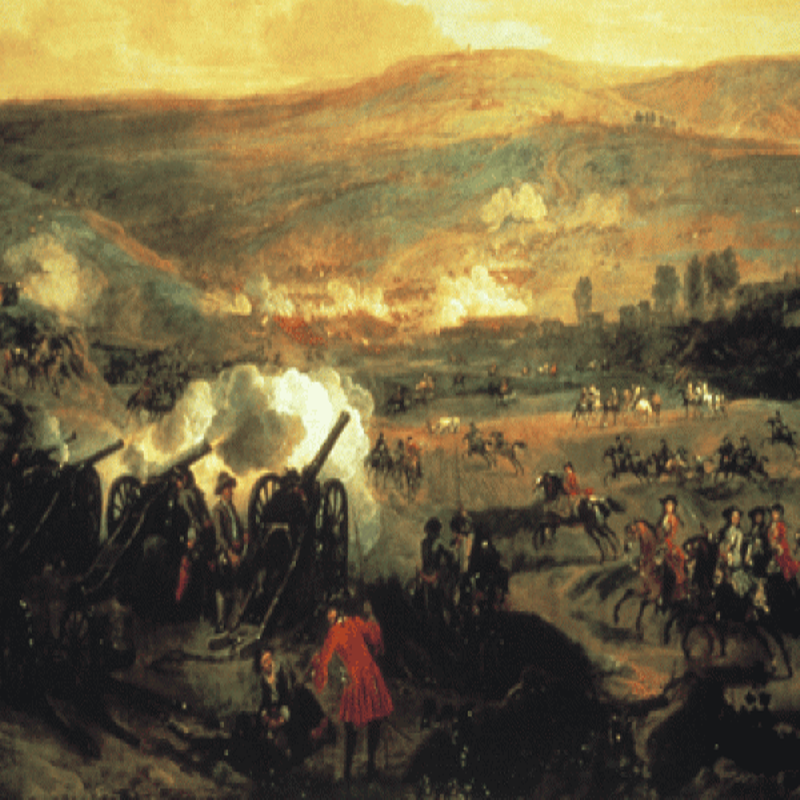
The ball which barely missed William's head ripped through his sleeve, grazed his shoulder and knocked him from his horse. The rumour quickly spread through the Jacobite camp that he had been killed but he was in fact uninjured and had merely picked himself up, brushed himself down and put the incident down to fate remarking, “Well, it could have been worse.” But it had indeed been a lucky escape.
Other than Oldridge there was one other place where the Boyne could be forded, Ros Na Ri some four miles to the west and James had already despatched some 800 men to cover this point. He hoped William lacked the local knowledge to be aware of it but the Prince of Orange had been as thorough as ever,
Late on the night of 30 June the Jacobites could hear movement in the enemy camp, it was the sound of marching feet. James believed that William was moving his army under the cover of darkness to Ros Na Ri and after holding an emergency Council of War he ordered his army to do likewise leaving only around 5,000 men to guard the crossing at Oldbridge.
James had blundered, for though William had indeed sent troops to Ros Na Ri it had only been a detachment of around 10,000 men. He had remained at Oldbridge with the bulk of his army.
William intended his troops to ford the river at Ros Na Ri wheel East and attack James’s exposed flank thereby threatening his line of retreat to Dublin. He knew that James would have to respond to such a move and divide his army, but he hadn’t expected him to take the bait quite so thoroughly - the tactic had worked like a dream.
James did not arrive at Ros Na Ri with his army in time to prevent William’s forces from fording the river even though the 800 men he had defending the south bank fought hard for over an hour under the inspired leadership of Neil O’Neill before he was killed and they broke and fled.
Having received news of the success at Ros Na Ri William after a brief but sustained bombardment ordered his elite Dutch Blue Guards to ford the river at Oldbridge.
The poorly armed Irish defenders stripped of most of their artillery and further hampered by the low-lying mist common at that early time of the morning and which shrouded the enemy from view could do little to prevent them. After a brief but furious hand-to-hand struggle the Irish abandoned their positions and dispersed to nearby hills. It seemed to William that victory was close at hand.
James had taken his veteran French infantry with him on his march to Ros Na Ri but had however left behind a contingent of French cavalry and they now stepped into the breach evacuated by the Irish as again and again they charged the Dutch lines pinning them to the riverbank.
Unable to make any progress and fearful that his favoured Dutch Guards might be wiped out a frustrated William ordered two more crossings to proceed further down the river in an attempt to thin out the French cavalry.
These were no more successful than earlier attempts to ford the river had been and William's men struggled to maintain a foothold but the French were taking heavy casualties and as their numbers diminished so did the frequency and potency of their attacks. In one charge alone only six of the sixty men who participated returned. Witnessing this William now took personal command leading 2,000 men in a final attempt to seize and secure the riverbank on the other side.
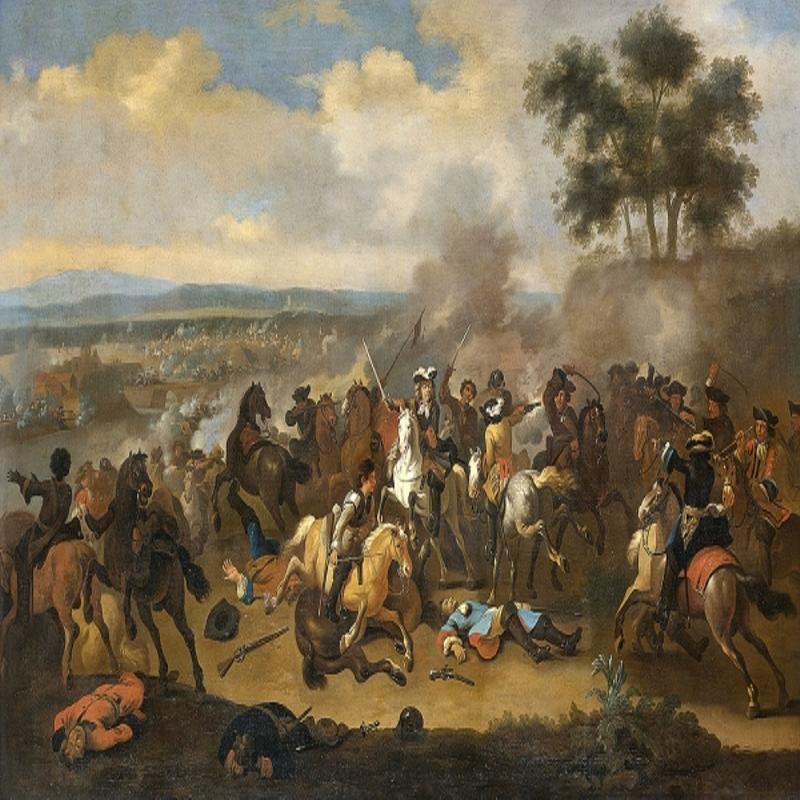
Inspired by the sight of their general in the thick of the action his men rallied and the battle at last began to swing in their favour even if William soon after suffered an asthma attack and had to be led from the field and carried back to camp in a blanket
.
The Irish who had been firing down on William’s troops from the hills now ran in great haste up a long slope to the churchyard at Dunmore with the enemy in hot pursuit. Here they would make a gallant last stand but outnumbered almost five to one it was hopeless. Those who had survived the fighting now retreated towards Dublin, screened by what remained of the French cavalry.
Whilst the battle was being decided at Oldbridge, James, camped just three miles away, did nothing. His army had confronted the William’s troops advancing from Ros Na Ri but an impassable boggy swamp had divided the two armies preventing them from engaging. As news of the events unfolding at Oldbridge reached him he simply waited as once more he was afflicted with nosebleeds and uncertain what to. Eventually, aware that the William was manoeuvring to cut off his line of retreat instead of rushing back to Oldbridge where the battle still raged, he, along with a few subordinates abandoned the army and fled to Dublin.
Back in the capital James blamed his defeat at the Boyne on the cowardice of his Irish troops who he declared had run away. Upon hearing his words an Irish noblewoman present interrupted him to say: “If so, then they did not run as fast as you, for you are the first here.”
The casualties at the Battle of the Boyne were relatively light by the standards of the day and for the combined size of the two armies but not necessarily so for the actual numbers engaged. The Jacobites had lost 1,500 men of whom some 800 were killed while William’s army lost around 750 men with 350 fatalities.
Most of the Jacobite dead were Irish peasants who had enthusiastically volunteered to defend the cause of their King in Ireland. They had fought for eight hours against overwhelming odds whilst James less than an hour’s ride away did nothing to help them.
With the battle lost he made no attempt to rally his forces or ensure a well-ordered retreat, instead he abandoned them to their fate. He was known thereafter by the Irish, many of whom now deserted his cause, as Seamus a’ Chaca – James the Shit!
But why did James behave the way he did? He was after all, an experienced military commander who had proven his courage many times over in the service of his brother. His personal valour then had never been in doubt.
His chief advisors, Richard Talbot, Earl of Tyrconnel, and Alexander MacDonnell, Earl of Antrim were incompetents, whilst the Duc de Lauzon was to prove less effective than hoped but that’s why James had taken personal command. He had always been prone to despondency. Some have even suggested his indecision was the first signs of the dementia that was to overwhelm him in later life.
Despite most of his army never even being engaged at the Boyne and remaining intact James decided his cause was lost. Perhaps he was right for he had only ever viewed the conflict in Ireland as a stepping stone on his path to regaining his throne in England. He had no desire to be the leader of an Irish rebellion. After less than 48 hours in Dublin he made for the port of Kinsale and departed for France. Despite his absence the war was to continue in Ireland for another two years.
In early August the city of Londonderry was relieved after a siege of 105 days and though there had been little actual fighting the city was under constant bombardment and had come perilously close to starvation. More than 8,000 of its citizens had died mostly of disease and malnutrition and like the Battle of the Boyne itself the Siege of Londonderry has since become an epic of Protestant Irish history, and its battle-cry of “No Surrender” continues to echo down the ages.
With neither side able to secure total victory on 3 October 1691, the war came to an end with the signing of the Treaty of Limerick.
For William the war had never been about religion, he had merely wanted a peaceful and compliant Ireland so he could secure his position in England and more importantly retain Dutch independence in their on-going conflict with France. The terms he offered therefore were generous. Those Irish Catholic nobles who had been in rebellion were permitted to retain their titles and estates if they swore allegiance.
The Jacobite army was disbanded but those who wished to do so could follow James into exile and some 14,000 did so. Known as the Flight of the Wild Geese they were to go on and form the Irish Piquets and be assimilated into the French army. Some others were to enlist in William’s army but most simply returned home.
James lived out his remaining years at the grand palace of Saint-Germain-en-Laye just outside Paris that had been donated to him by Louis XIV. There he established a Royal Court in exile with ministers, military advisors and a retinue of servants. He appointed a shadow government and would tend to the business of administering a country he no longer had any authority over, reading dispatches from his agents in England and making appointments, but it was a barren existence.
He was totally reliant upon the generosity of the French King who no longer believing that James had the capacity to win back his Kingdom had withdrawn all further military support. It would be down to his children and grandchildren to keep the flame of Jacobite resistance burning.
James Stuart, former King of England died on 16 September 1701, aged 67, a bitter man.
Tagged as: Tudor & Stuart, War
Share this post:





